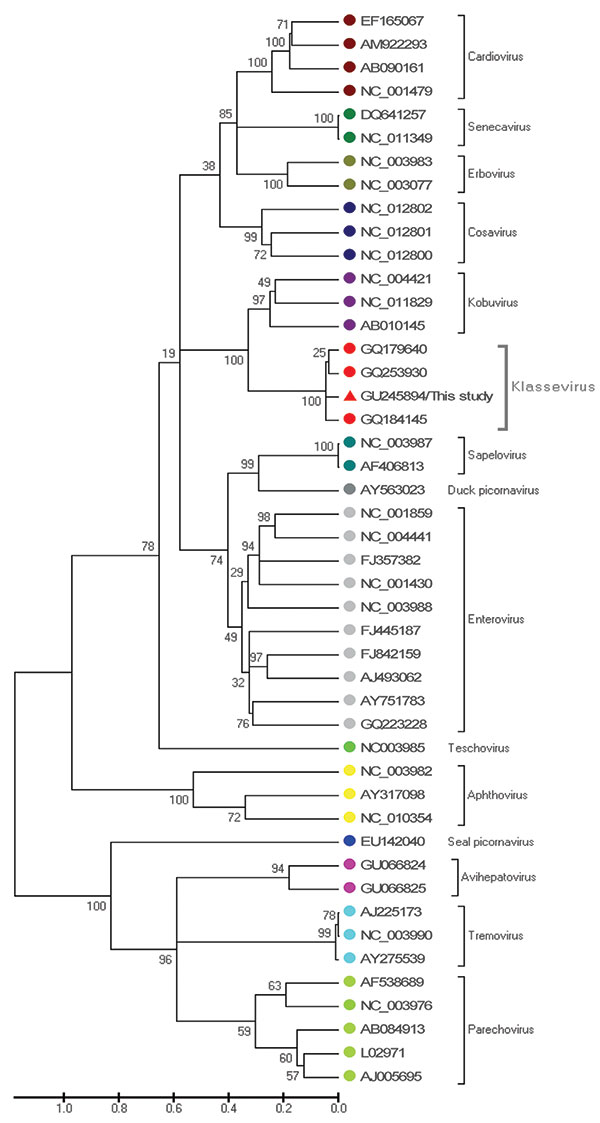Volume 16, Number 8—August 2010
Dispatch
Picornavirus Salivirus/Klassevirus in Children with Diarrhea, China
Figure

Figure. Phylogenetic analysis of the more variable P1 region of the salivirus/klassevirus isolated from fecal samples of 9 (4.2%) of 216 children with diarrhea in the People’s Republic of China, April 2008–March 2009, and 45 representative strains. Phylogenetic tree was constructed by the neighbor-joining method with 1,000 bootstrap replicates by using MEGA4.0 software (www.megasoftware.net). Bootstrap values are indicated at each branching point. The isolate SH1 is marked with a triangle. Scale bar indicates estimated phylogenetic divergence.
Page created: March 30, 2011
Page updated: March 30, 2011
Page reviewed: March 30, 2011
The conclusions, findings, and opinions expressed by authors contributing to this journal do not necessarily reflect the official position of the U.S. Department of Health and Human Services, the Public Health Service, the Centers for Disease Control and Prevention, or the authors' affiliated institutions. Use of trade names is for identification only and does not imply endorsement by any of the groups named above.